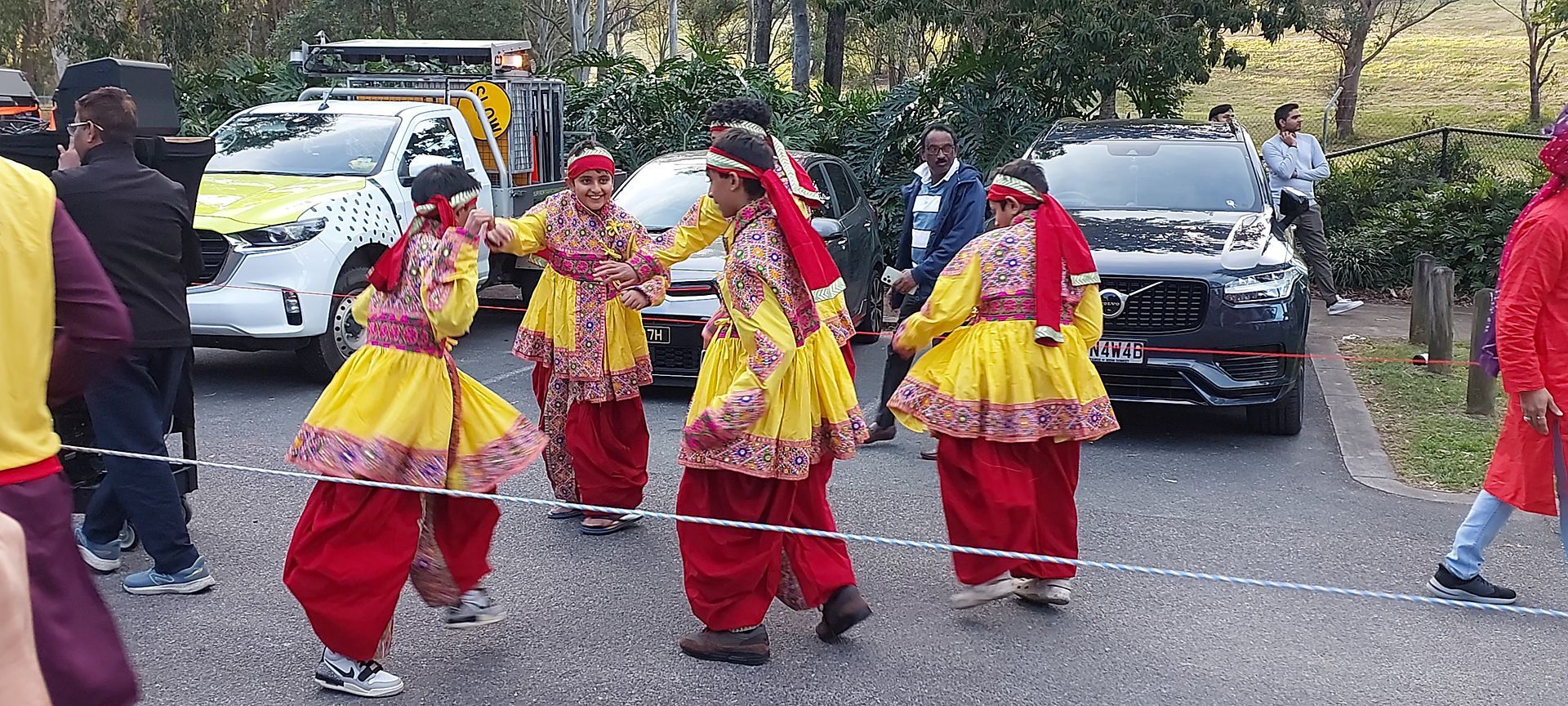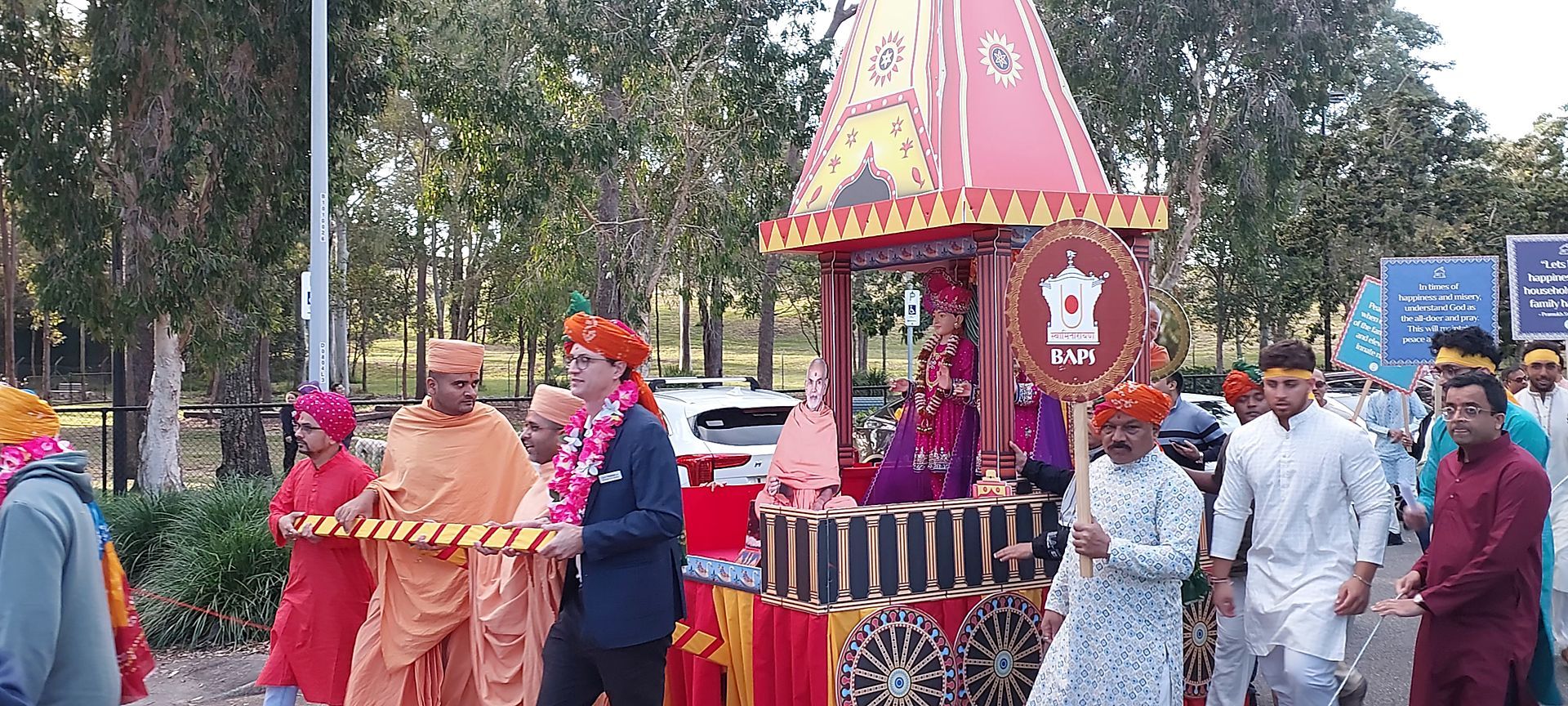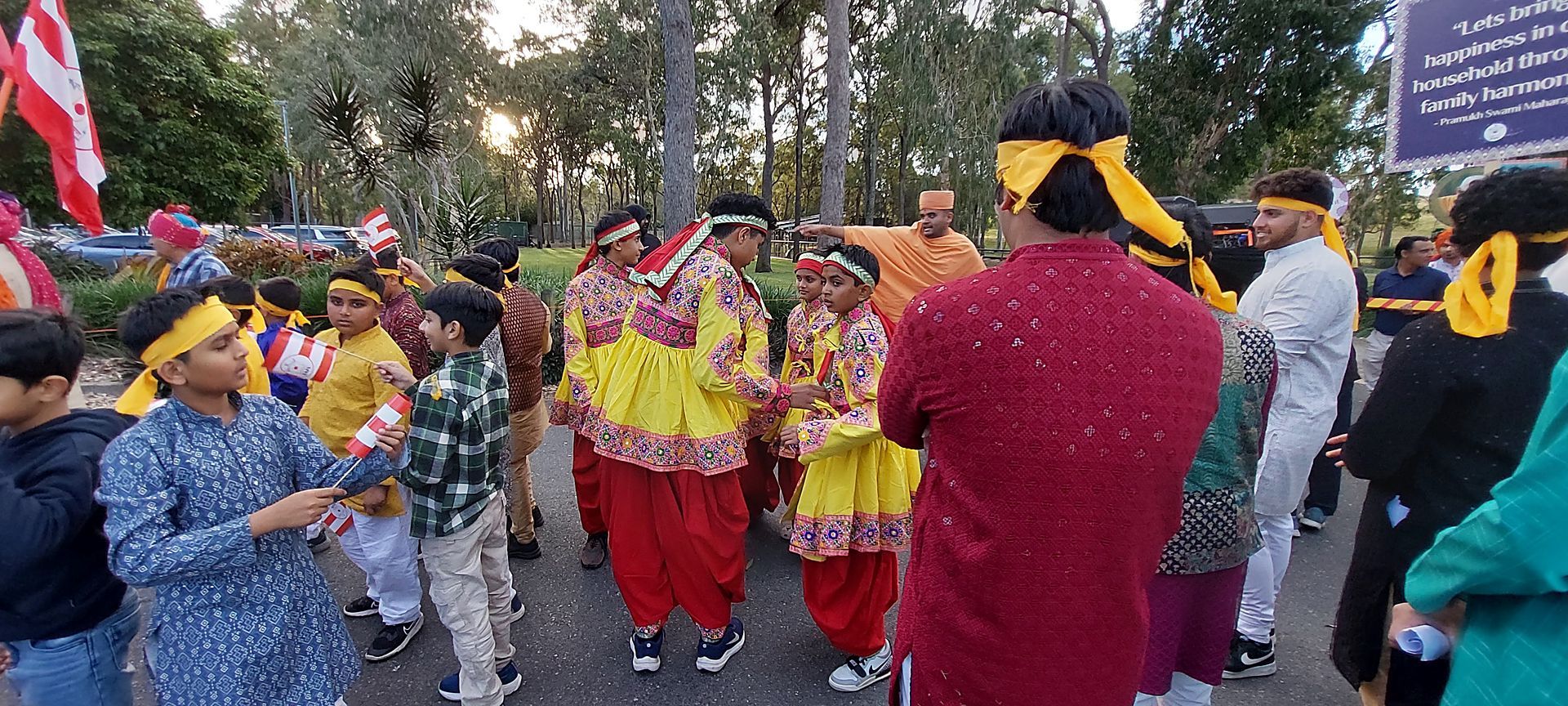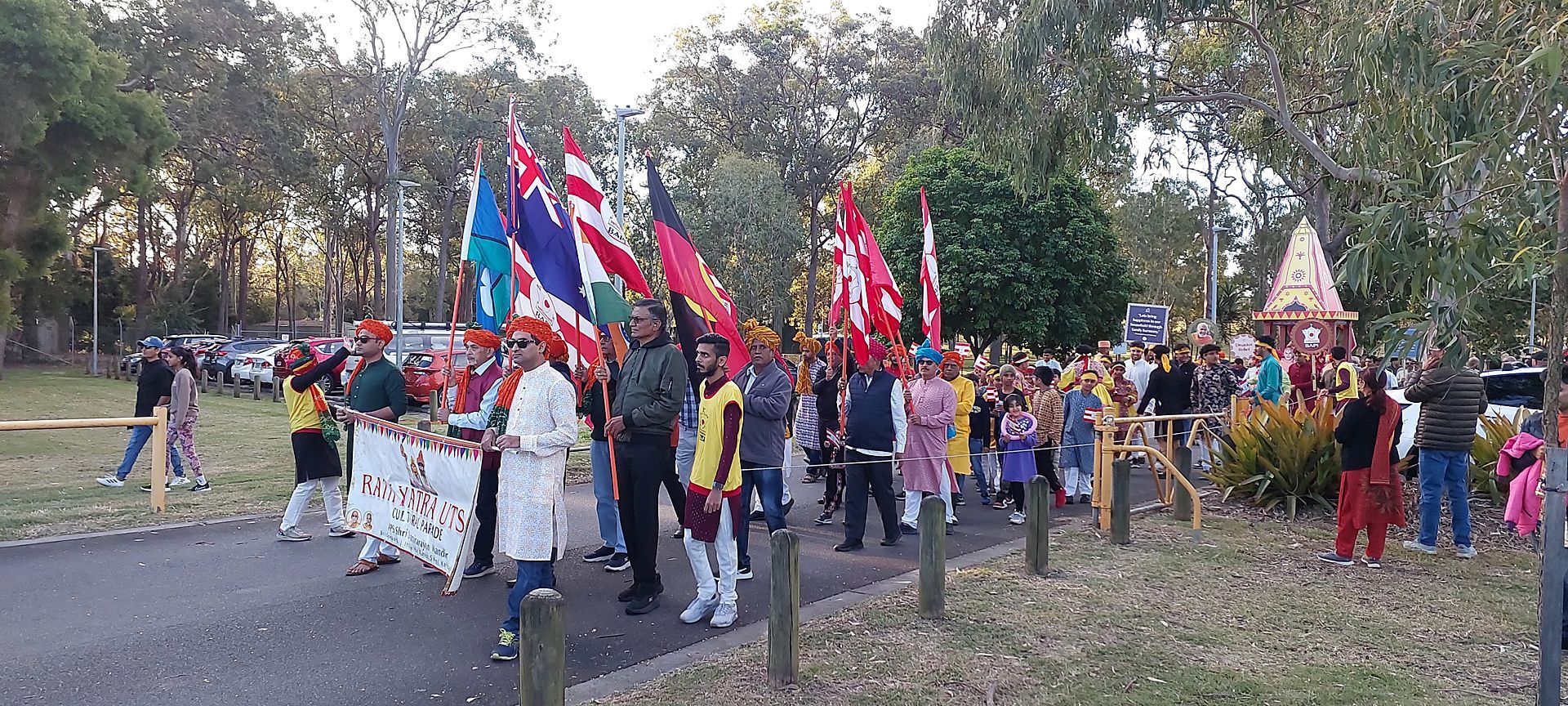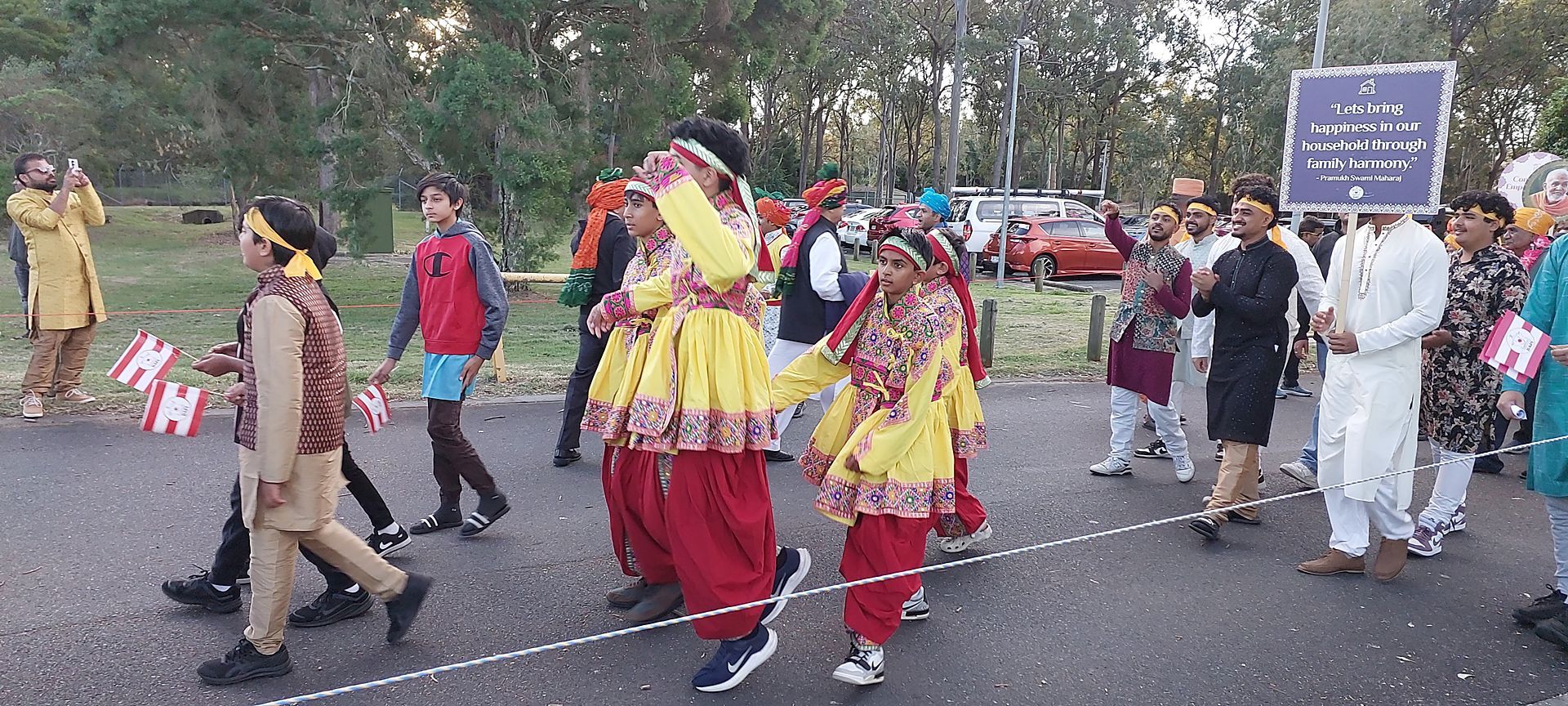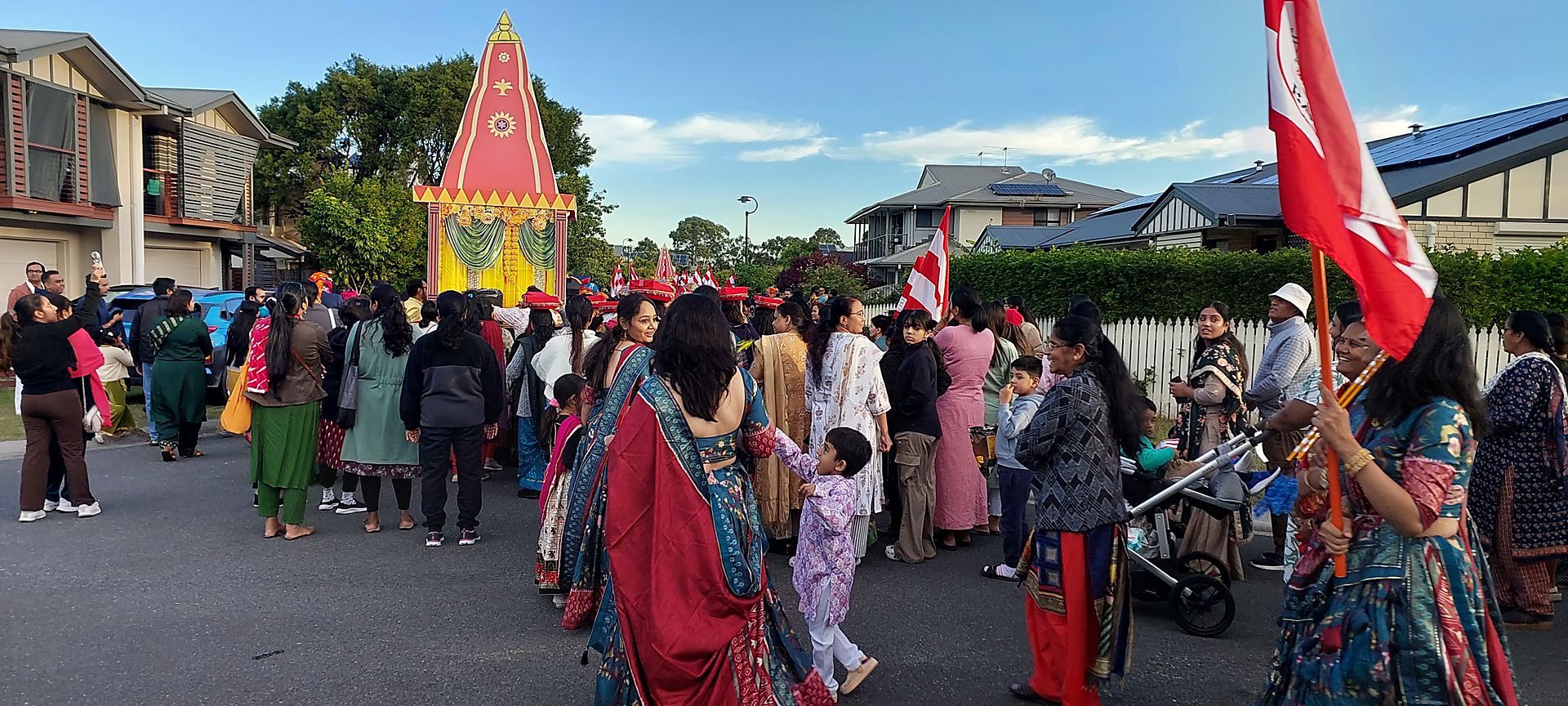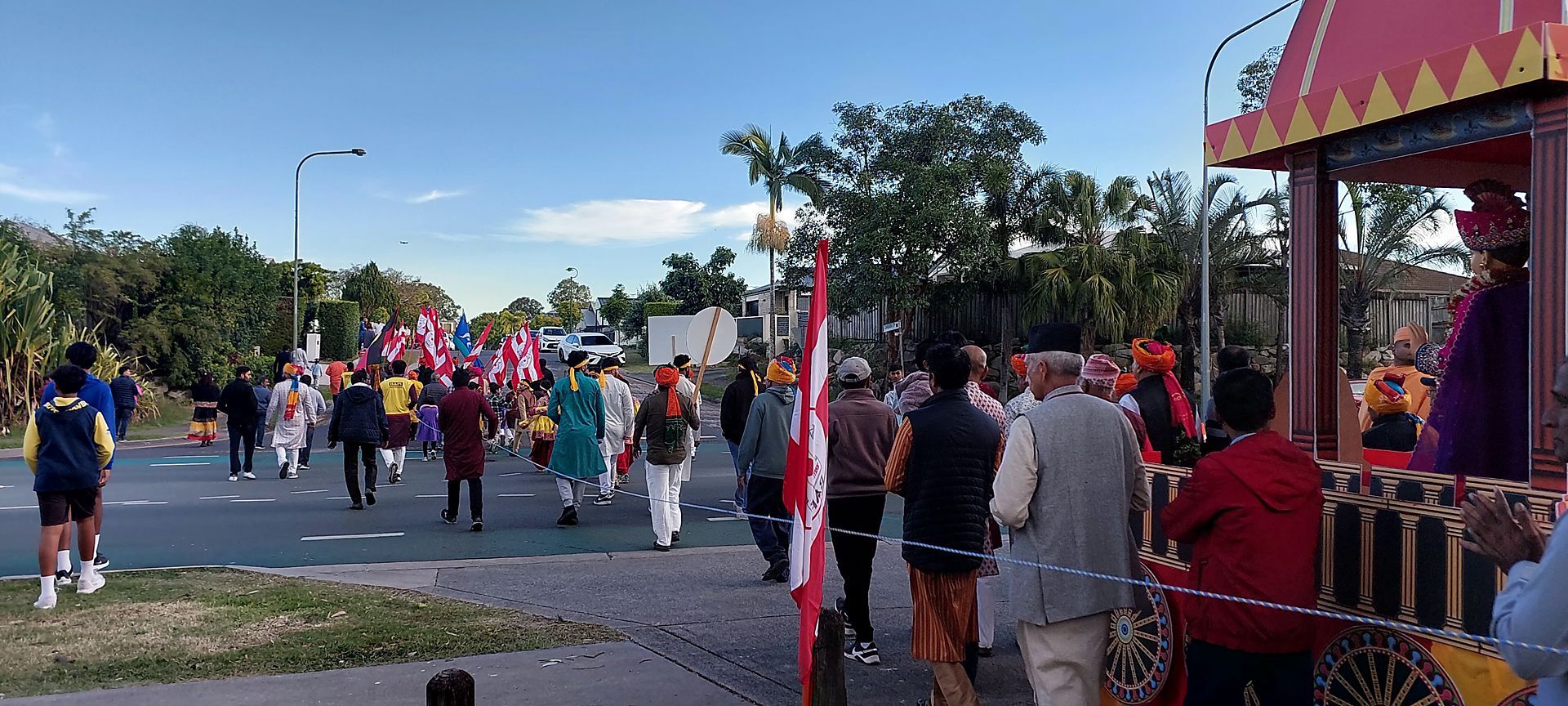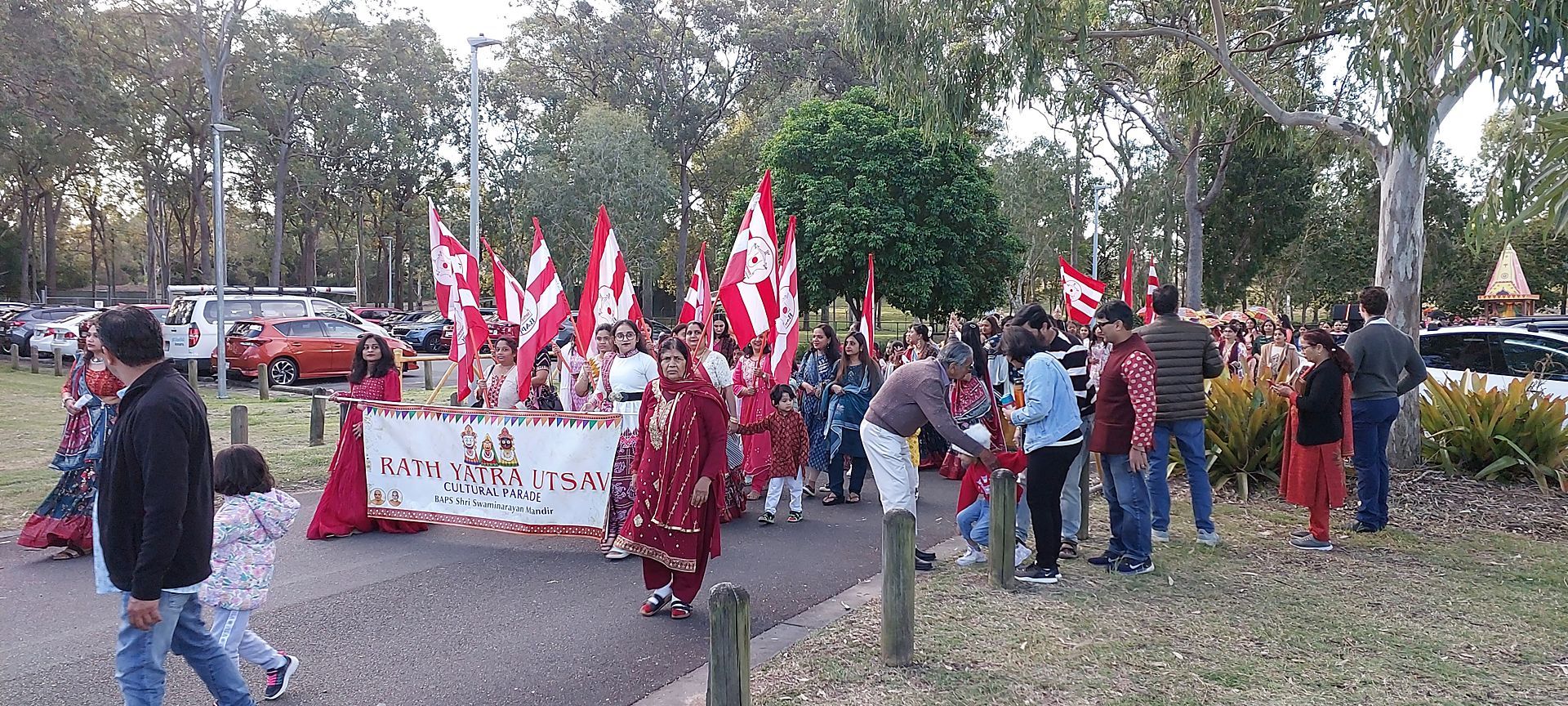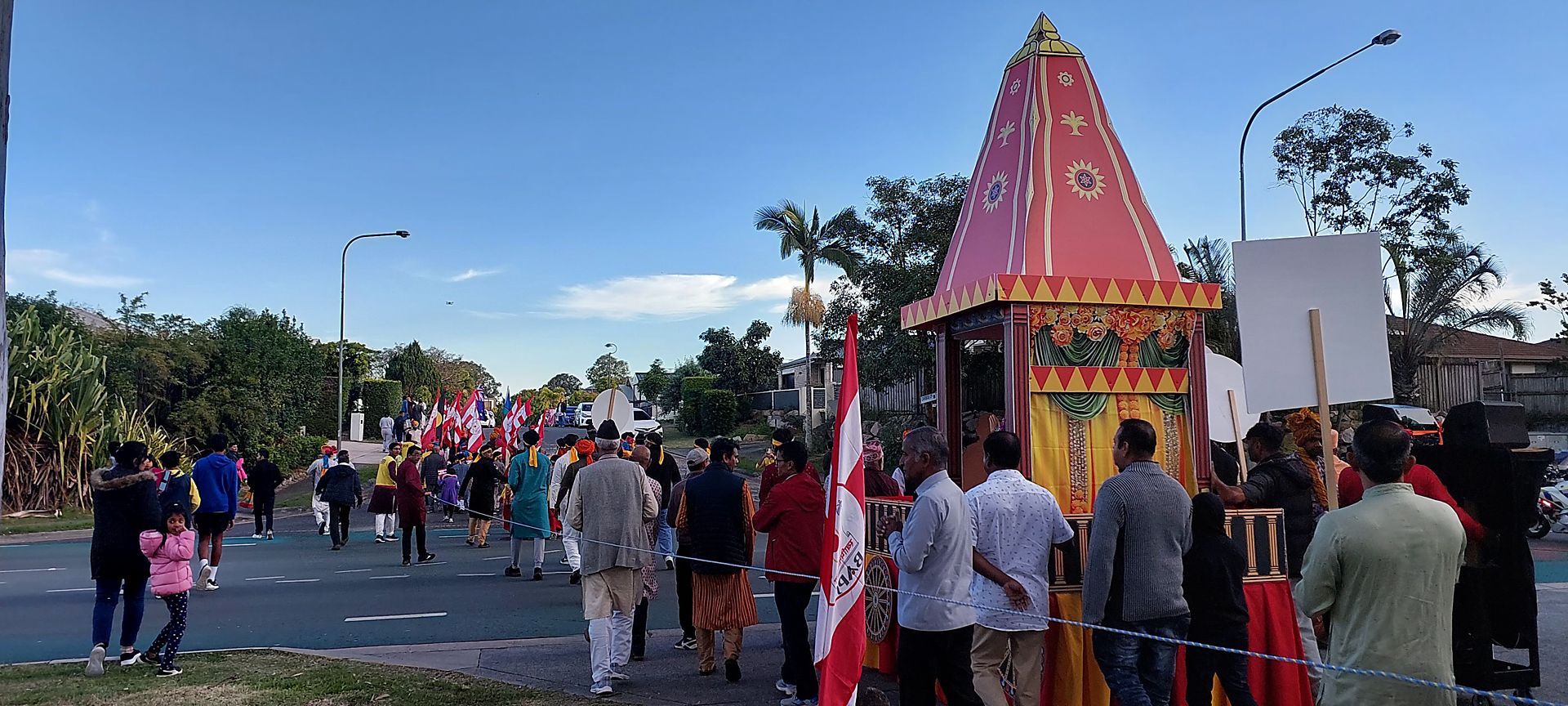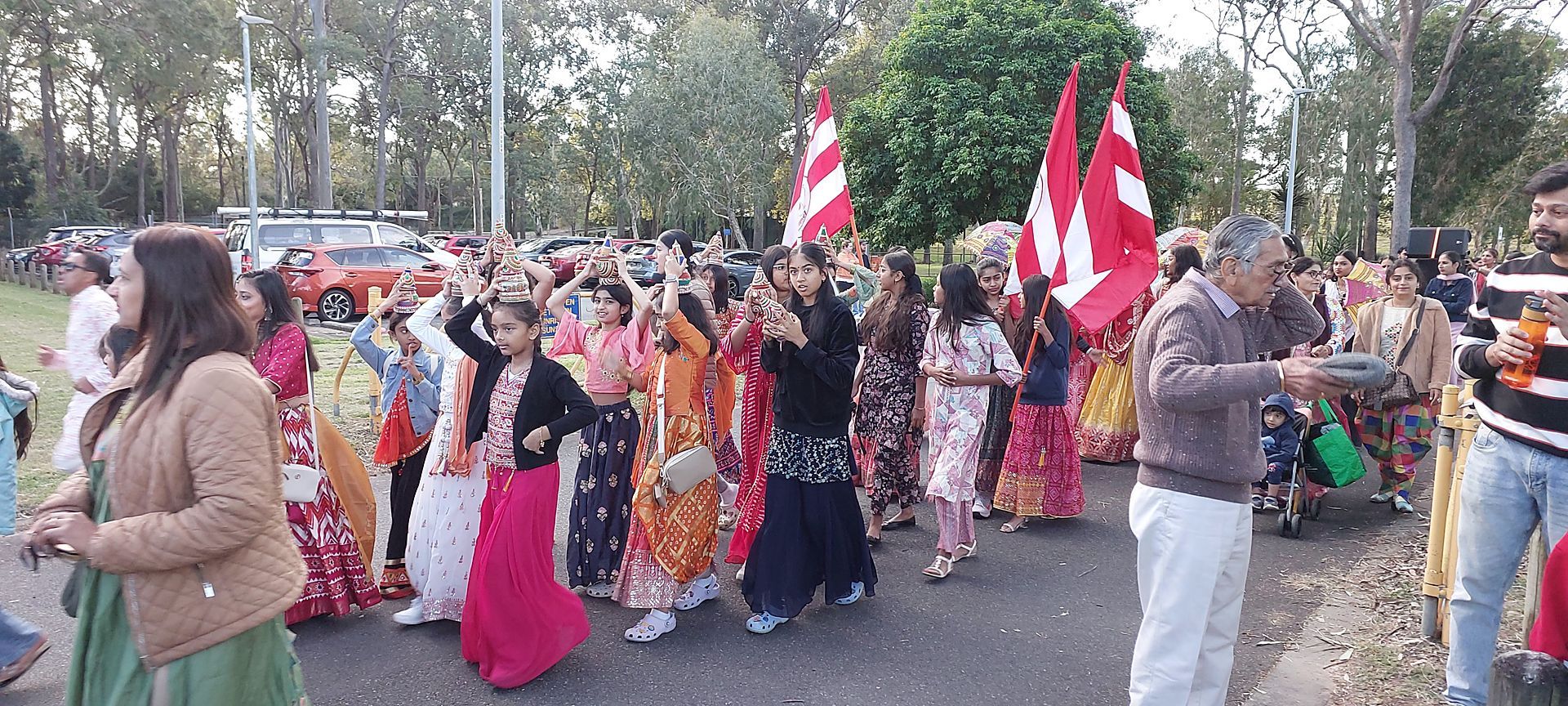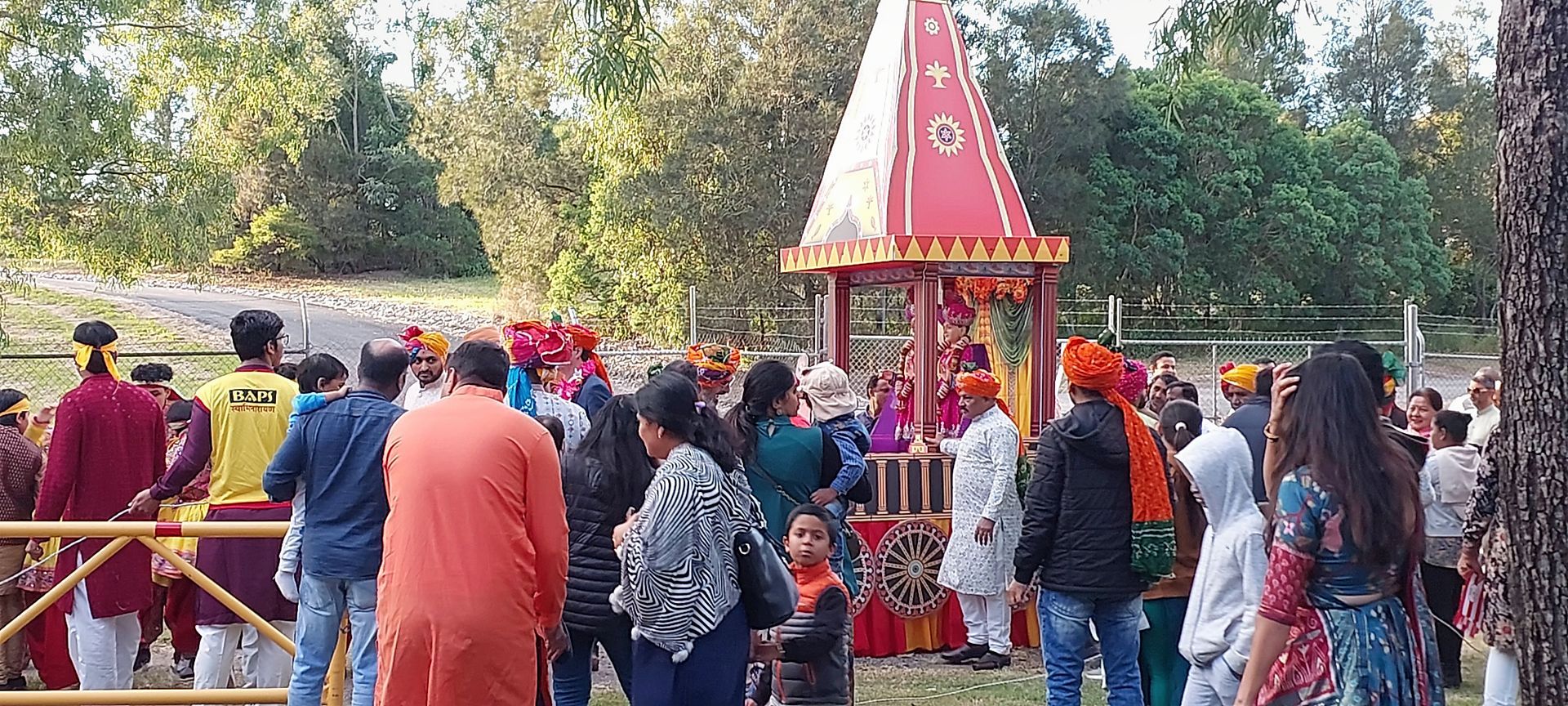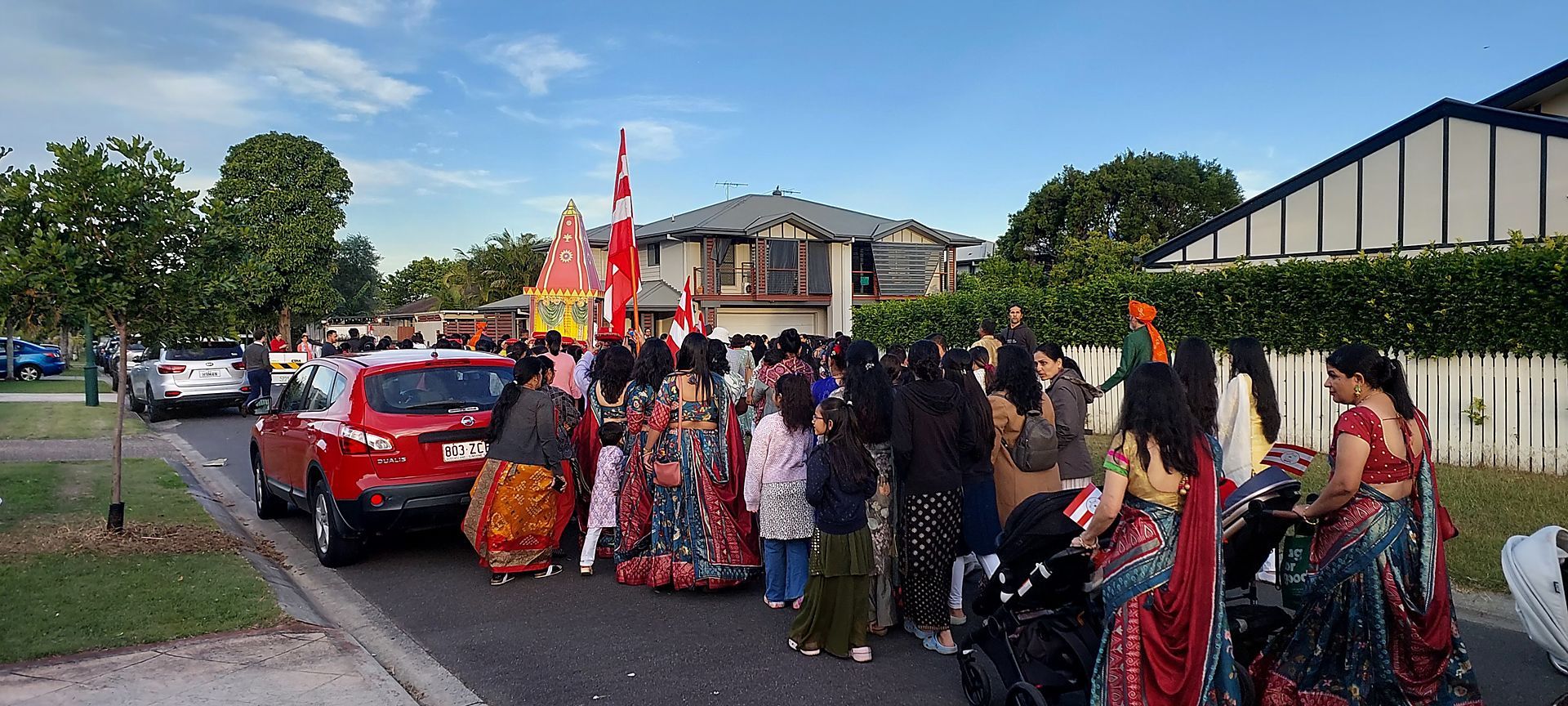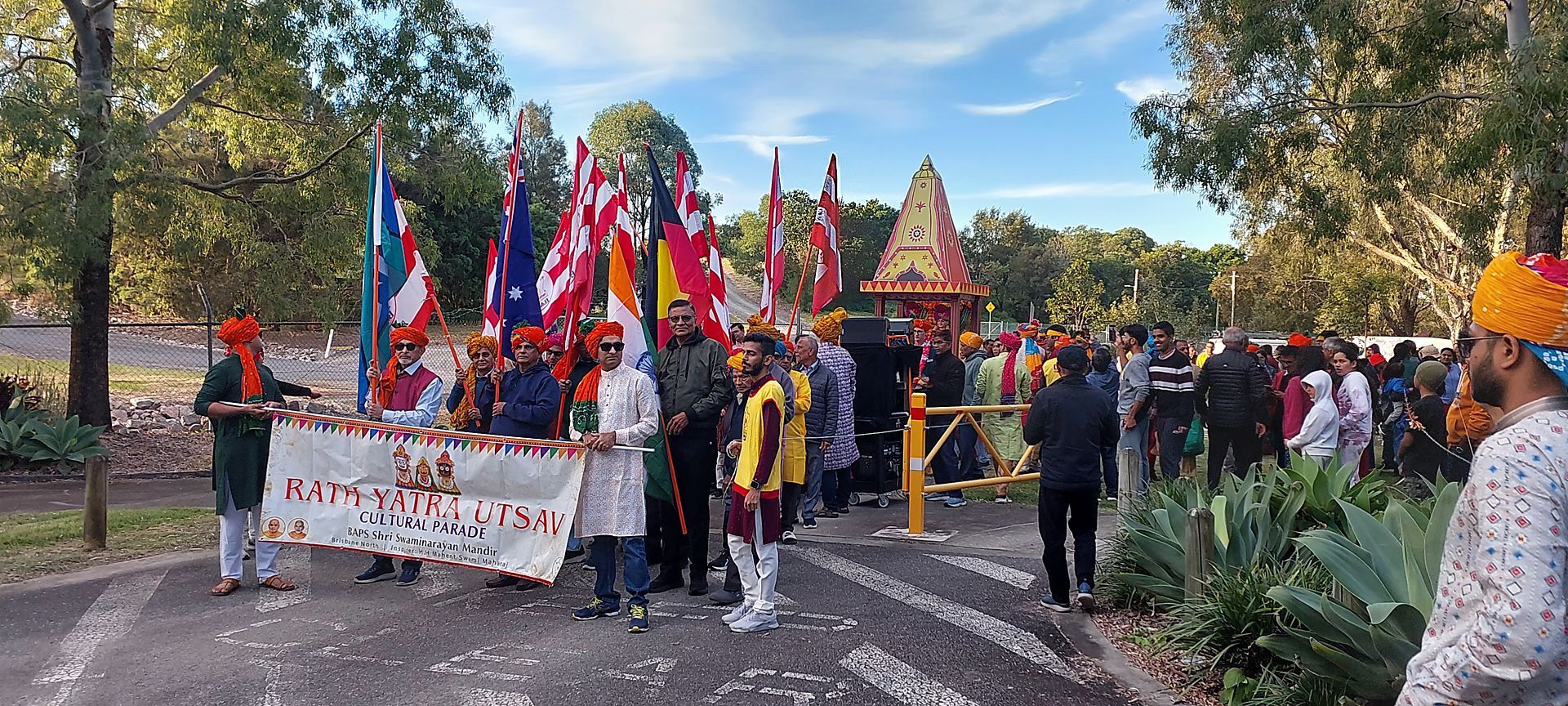Fitzgibbon Community Centre is at the heart of Fitzgibbon and offers space for activities and programs for everyone.
Fitzgibbon Community Newsletter
No. 2 (July 2025)
This month in your newsletter:
One Man, One Yacht, Two Mermaids: The White Mischief Story
Many Fitzies might have noticed a sailboat being transformed on our streets over the past couple of years. The renovator of White Mischief is Eric Cortis, a highly-talented local electrician who is just twenty-six years old. Eric’s dad is a boat-builder who would occasionally take Eric to work with him from when Eric was about five years old. He picked up all sorts of skills and an interest in making things, and he sometimes went sailing with his dad. He bought this boat, likely built in the eighties, when he was twenty or twenty-one and living in Sydney. The large trailer sailer (small yacht) had some rot and a few leaks, but since it has a foam and fibreglass hull, it will last a long time. Eric thought, “I’m just gonna turn it into a project.”
When Eric moved to Brisbane, he left his boat in Sydney for about a year while he decided whether to stay in Queensland. Ever since making up his mind to stay two years ago, he has been working hard on renovating this yacht, which features two carved mermaids. “The boat was originally named White Mischief, and the name was funny, so I left it. And it’s bad luck to rename a boat.”
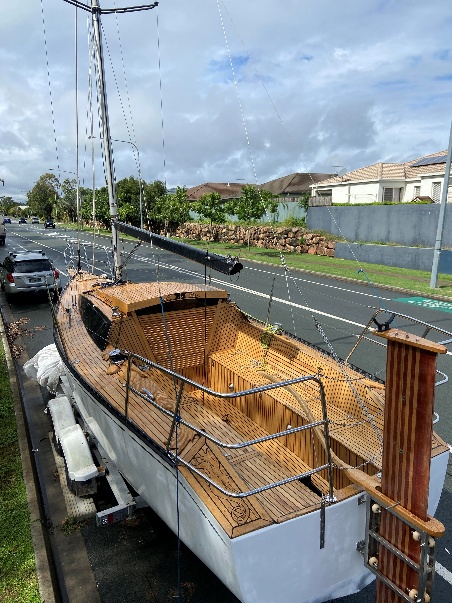
“It’s a little over the top—a bit fancy with all the varnish and stuff. I did all the carving—and everything else—myself. My dad used to make furniture as well, and I learned how to carve and sculpt from him. I build all my own furniture, and I also make timber sculptures. I do a lot of creative stuff.”
Eric gutted the whole boat, leaving only the top deck. He cut holes in the top because it had rotted. He fixed all the rot in the plywood and fibreglass deck, sanded all the paint and everything back to bare glue, and made new decking. Most people use teak on boats, but Eric prefers Australian white beech because it is more attractive. Beech still contains a lot of oil, making it highly water-resistant. Although perhaps not as hard as teak, it is still quite durable and weighs about half as much. Eric bought all the timber rough-sawn and milled it himself, putting it through bandsaws in his workshop at home. With larger items, he sometimes paid the Sandgate Men’s Shed to cut things for him.
“Everything I make just comes from my imagination. I grew up using the tools and making stuff and working on boats, so it’s all in my head. Nothing’s really planned or drawn up. My dad’s around seventy, so he doesn’t get up on the boat to help me with stuff or lift things, but he teaches me things. He’s in Sydney, so I ring him and ask ‘What should I do with this?’ And he guides me through a few things.”
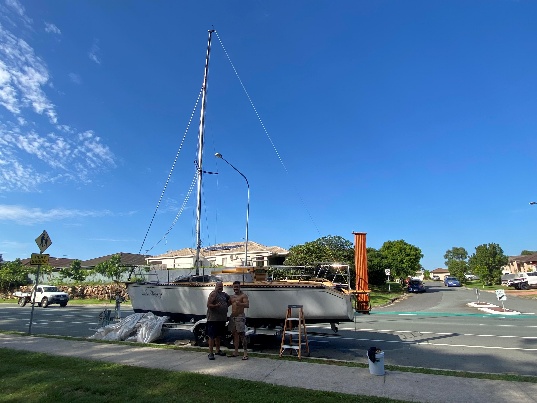
Eric totally revamped the interior, gutting the cockpit, putting in a 200-litre water tank and building the floor over it. He cut a hole through the hull of the deck to install a 60-litre fuel tank. The boat used to have an outboard motor on the back, but Eric created a motor well inside for the outboard to sit. This was a big job. He took out pretty much everything inside, even the mast support, which was a large aluminium beam. Instead, there are now two big Brazilian mahogany posts.
Eric also did the timberwork inside, using V joining on 32-millimetre-wide beech boards, which have a neat, chamfered edge. It’s all high-gloss, marine varnish. A doorway leads into the front berth, which can sleep one or two people. On the side, there’s a single berth that can double as a seat, since there’s a table in front of it. Eric put in an oven, fridge, toilet and full galley bulkhead. He installed a full bulkhead in the stormboard area and rebuilt the anchor. He also took care of all the electrical work. Eric has just recarpeted the boat with black marine carpet in the spaces between the timberwork.

Since Eric is a full-time electrician and runs his own business on the side, he only had time to renovate the boat on weekends and after work.
“The biggest challenge was mostly perseverance, because it’s such a massive job. Sometimes you’re in there, and you sort of wanna cry. Going out every day for two years has probably been the main struggle. Sometimes I’m like, ‘Oh, I need to get finished’, but I don’t want to do it. I just drive there, and sometimes I’ll sit in the car for twenty minutes. Eventually I get out, have a coffee and go and do it.”
Eric put the boat in the water in May to test for leaks and other issues. His father is coming to Brisbane in a few months, and Eric plans to add some finishing touches and fix a few things before then. All the hatches are off now so that he can touch up the varnish at home. Because Eric worked in an upholstery factory after school, he cut up foam and made the mattresses, and he is currently getting covers made. He wants to add a few items, such as an extra light and a fan. And the cushions are going to be made up. So the boat is pretty much ready to hit the water.
“I can make anything. I just need time. People might think the mermaid sculptures were the most difficult thing to do, but it took me only about two weeks to carve each of the two mermaids.”
The final step is to trim the boat and do some sea trials to make sure that everything’s sitting in the right place and is comfortable and set up for solo sailing. “I’m better at building boats than sailing them, but once it’s finished, that’s all I have to do, so I guess I’ll get better.”
The boat is on a trailer, and Eric looks forward to taking it to the Whitsundays, Moreton Island or the Gold Coast, going spearfishing, just hanging out and having a BBQ. He has no plans to build another boat, but later in life he might buy a bigger one and live on it, sailing around.
Eric has also built quite a lot of furniture—e.g. his bed, a large chair with skulls, a hall table, a TV cabinet and coffee table. He is currently carving a writing desk with intertwined snakes as the legs. All by hand, with just chisels and sandpaper—and perseverance.
Welcome to Agami Co: Eat, Drink, Play
Located at 522 Roghan Road in Fitzgibbon, this brand-new café is more than just a coffee shop—it’s a destination for those who appreciate a trendy, aesthetic cosy vibe paired with Instagram-worthy food and beverages.
The café was created by Mica and her husband Anthony, a full-time Executive Chef. Mica is also the founder of popular kids clothing brand Pigeon Mama and was recently nominated for the AUS Mumpreuner Awards. As parents of two young children, Mica and Anthony are committed to creating a space where families feel welcome and children can play in the dedicated creative play space.
Inside you will find a drinks menu that includes coffee any way you like it. They also offer specialty drinks, frappes and daily fresh-squeezed juice. Mica is always busy creating new drinks like their Nutella frappe or viral Iced Blueberry Matcha. Agami Co also keeps things fresh and exciting by mixing up the menu each week. From in-house-made toasties, bowls and bagels to their delicious sweet treats, gourmet slow-cooked pies and mouthwatering sausage rolls, there’s always something new to try. The ever-changing offerings ensure there’s always a reason to return and discover something special. They also cater to vegetarian, gluten-free and dairy-free requirements.
Agami.co is a space that welcomes everyone—families, individuals and even furry companions. With its inviting atmosphere, thoughtfully-crafted menu and strong focus on community, the café is quickly becoming a popular local hub, being open seven days a week from 7 a.m. to 3 p.m.
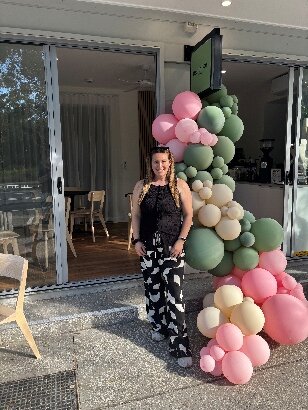
The word AGAMI is a mashup of the family’s initials, including Mica, her husband and their two kids under three. It means that the actions we take today create our karma for tomorrow—which is perfectly described in their tagline: Brewing more than coffee—crafting meaningful moments today to inspire a brighter tomorrow. The “Co” stands for “community”, which encompasses all that they are about.
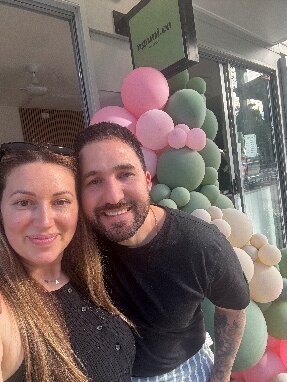
If you have children aged 0–5 years, you will also be interested in Agami Playgroup, which is on every Thursday from 9 a.m. to 11 a.m. directly across the road at the Fitzgibbon Community Centre. Each week offers different activities, indoor and outdoor play and occasional guest facilitators. Sessions are $5 per family and include a FREE coffee. You can book online via their instagram page @_agami_co and @agami_playgroup. They are always in need of volunteers to help with the playgroup.
The café is also on the lookout for casual staff, especially for busy weekend shifts. Those passionate about coffee and community are encouraged to get in touch via email at hello@agamico.com.au.
So pop in, grab a drink and a bite to eat, and watch this space as they are quickly becoming a local favourite!
Rath Yatra Festival: Culture, Colour and Community Spirit
Saturday 14 May was the day of the Rath Yatra cultural festival depicting the journey of the chariots–“symbolising and promoting goodness, happiness and harmony in the community”. In this spiritually significant South Asian festival, which is mainly associated with Hinduism but also with Jainism and tribal folk religions, the deities are removed from temples for the devotees and journey through the streets. Hidden World was transformed into a sea of bright fabrics, joyful music and smiling faces as people from India, Nepal and Sri Lanka came together in unity to celebrate this festival throughout the day and parade the deities in a decorated wooden chariot. The festivities culminated with an enthusiastic procession through some nearby streets, transforming the quiet Fitzgibbon streets into a vibrant explosion of colour, drums, dancing and joyous celebration.
Not Fitzgibbon, but Ballard or Perkinson?
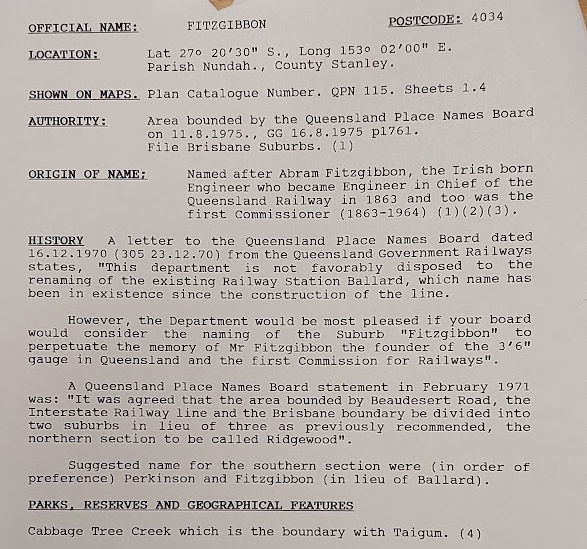
A somewhat cryptic and undated document from John Oxley Library’s clippings file on Fitzgibbon suggests that this suburb was almost not named “Fitzgibbon”.
Carseldine Station was built in 1986, so this can’t refer to Carseldine Station, which was not yet “existing”. Note that the postcode is given as 4034, not 4018. It was that postcode until at least 2010.
Ballard Railway Station (named after twenty-six-year-old Robert Ballard, the engineer-in-charge of works on the Range crossing from Murphy’s Creek to Toowoomba) is an alternative name for Spring Bluff Railway Station. The origins of the Perkinson suggestion are unclear.
Did you read the very first issue of the Fitzgibbon Community Newsletter? If you missed it, see https://www.fitzgibboncommunitycentre.org/newsletter-001-june-2025/).
We want to hear from you for the next issue! Share any local news, memories or anecdotes about Fitzgibbon, local photos (e.g. of community events, local landmarks), poems, or ideas for future issues. Let us know of any other Fitzies doing interesting things (e.g. with sport, music, art, crafts or … anything!). We’ll consider interviewing them for a later issue. The deadline for submissions for the third issue is 21 July. Contact us through the Community Centre website’s “Contact Us” page (https://www.fitzgibboncommunitycentre.org/contact-us/).




